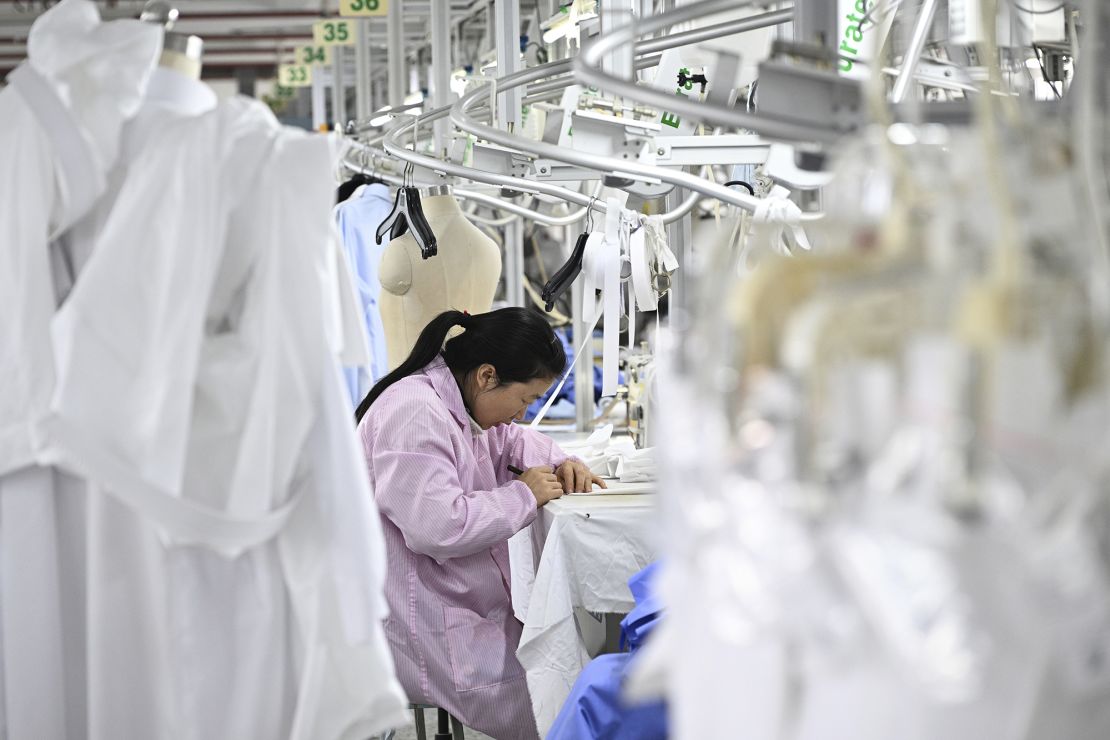President Donald Trump’s trade war is coming for your wardrobe, and the hardest-hit items will be the simple stuff.
The apparel sector is disproportionately impacted by Trump’s tariffs, which include a 10% minimum tax on all countries and a 145% tax on Chinese imports. Ninety-eight percent of clothing in Americans’ closets is imported to the United States, and China is the largest clothing importer to the United States, accounting for 22% of the apparel market.
While Trump’s tariffs will raise the cost of most clothing, the sharpest price increases will be the basics, like the $5 T-shirts, the $10 six-pack of socks and the $25 sneakers that many Americans wear, say trade policy researchers and economists.
“Basic clothing necessities such as cotton T-shirts, underwear and socks will go up in price higher and quicker because consumers will still need to buy them even as the price increases,” said Sheng Lu, professor of fashion and apparel studies at the University of Delaware.
In other words, since customers buy these items year-round, retailers will need to restock them more quickly than seasonal gear and the occasional dress or suits customers buy that companies can stash away for longer, he said. That means the companies importing clothing are doing so more frequently, increasing the likelihood that their shipments will be tariffed.
The United States is not only heavily reliant on China, but also on low-cost clothing manufacturing in countries like Vietnam and Bangladesh. Since there are no alternative ways to produce clothing in the United States at competitive costs or on a large scale, shoppers can expect to pay 65% more for clothing and 87% more for shoes within the next year, according to an analysis by the Yale Budget Lab, a non-partisan policy research center. Clothing prices will stay 25% higher and shoe prices 29% higher in the long run.
Uneven impact
Additionally, Trump’s tariffs will raise prices on basic, mass-market clothing from China more than on luxury goods’ prices because the markups are lower on cheaper items, said Edward Gresser, vice president and director for trade and global markets at the Progressive Policy Institute, a left-leaning think tank.
Even before the Trump administration’s new tariff agenda, apparel imported into the United States had some of the highest levies of any sector — a legacy of the large domestic textile manufacturing industry during the 19th and 20th centuries and mounting tariffs on China in recent years. In 2024, apparel accounted for 5% of imports but about 26% of tariffs collected, according to the American Apparel & Footwear Association, an industry trade group.
Trump’s tariffs will push up these rates even higher on apparel, leaving retailers less room to absorb any cost increase on low-margin products.

However, most luxury products are made in Europe, such as leather handbags and shoes from Italy and Spain and watches from Switzerland. Costs may rise on luxury items, but the price increases will be more measured than items imported from China, analysts say. For example, Hermès said prices will rise on its luxury bags and scarves beginning May 1 to “fully offset” the impact of tariffs.
“The beauty and luxury industries appear insulated from the worst of tariffs,” analysts at Telsey Advisory Group said in a research report last week. Higher-priced footwear production has also moved out of China, while production of mass-market shoes has remained, they said.
Hit to low-income shoppers
Higher prices for basic clothing will strain lower-income customers, who spend a greater chunk of their incomes on necessities such as apparel and footwear.
The lowest-income households in America spent more than triple their share of income on apparel compared to the wealthiest households, according to a report by the Trade Partnership Worldwide, an economic research firm, analyzing data from the Bureau of Labor Statistics.
The end of the “de minimis” shipping exemption next month — which allows packages worth less than $800 to enter tax-free into the United States, a boon to Chinese e-commerce companies like Shein and Temu — will also disproportionally hurt lower-income households, according to research from UCLA and Yale economists.
The share of packages delivered under the de minimis threshold declines with income, the study found, with 48% of packages shipped to the poorest zip codes, compared to 22% for the richest zip codes in the United States.
“For the most part, the consumers who are buying cheap basics have much less disposable income,” said Margaret Bishop, an assistant professor at Parsons School of Design. “The people at the lower to middle socioeconomic tiers are getting disproportionately taxed by tariffs.”




